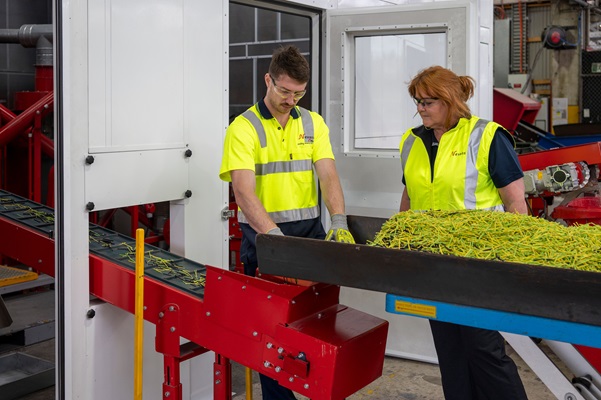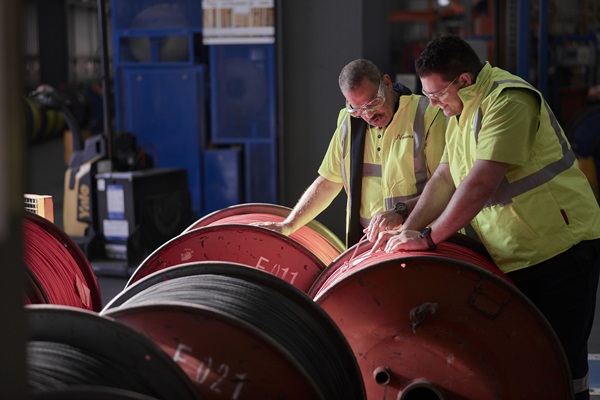Balancing wiring safety and sustainability
As Australia becomes more electrified and achieves various sustainability targets, it’s important to keep our electrical systems safe. San Williams uncovers some of these risks and the latest opportunities from cabling manufacturer Nexans.
Australia’s ambitious shift to a decarbonised future is set to reshape the landscape of energy generating, storage, transmission and consumption. At the forefront of this transition is the electrification of homes and buildings.
ADVERTISEMENT
With new gas connections being phased out in Victoria, the demand for electrical alternatives like induction cooktops, heat pumps and electric hot water systems is rapidly increasing. The National Construction Code’s (NCC) stricter energy efficiency requirements for commercial and residential buildings also means incentivising the construction of fully electrified structures.
Policies like the Integrated System Plan are laying the groundwork for a cleaner future but their effectiveness hinges on developing robust technical standards. This introduces unique and pivotal opportunities for the electrical industry, offering cleaner alternatives to fossil fuels, but also added infrastructural risks in meeting such demand in energy.
As the electrical power needed in buildings increases, ensuring quality, compliant cabling is paramount if we’re to avoid fire hazards and ensure safety for future lives. Extensive wiring solutions have now brought various regulations or risk mitigation by leading industry groups, according to Nexans ANZ chief executive Greg Stack.
“For us, it’s about ensuring all the cabling going into buildings is compliant to regulation. We’ve got stringent Australian and New Zealand standards for cable design, and Nexans has been a founding partner of the Australian Cable Initiative (ACI), a not-for-profit organisation advocating for improved safety and compliance of electrical cables,” Greg says.
In a burning building, the threat isn’t just a fire. A recent study supported this by examining the fire behaviour of electrical installations. Utilising a semi-real scale test setup, the test featured a polyvinyl chloride (PVC) cable installed on two types of background materials: non-combustible and combustible (PVC cables are commonly used in electrical installations in Europe and are frequently employed in single-burning item tests (SBIs)).
The results demonstrated that PVC cables exhibited significant fire properties, including high heat release, smoke production and a tendency to spread flames to other interior elements, concluding that even a relatively simple and short section of electrical installation can significantly increase the heat release rate and smoke generation parameters during SBI tests.
The ACI has successfully run its surveillance program which tests various standard cable products sourced from Electrical Wholesaler outlets across Australia, ensuring they meet the standards specified to avoid potential risk. If inconsistencies are found, the manufacturer or importer will be contacted to address them.
“We’ve had good wins. Some anomalies have been found in products and we’ve been able to change their construction, suitably. We have also been able to achieve product recall in severe cases where potential risk to the safety of the community was present. So, we feel we play a global role in working with Energy Safe Offices to ensure broader governance in products meeting required specifications,” Greg says.
Beyond fire safety, the environmental impact of electrical cabling and wiring cannot be ignored. Australia has an ambitious challenge in meeting its clean energy goals with a growing demand for sustainable practices, innovative solutions or prioritising a balanced approach.
Acknowledging landfills from the construction sector as a significant contributor, Greg says there have been recent new innovations launched by Nexans that focus on return and recycle, which together with solutions designed to support Modern Methods of Construction and modular construction, can also help minimise waste and cut back transportation and can assist in reducing the impacts of climate change with CO2 emissions.
“There are alternate ways we can increase sustainability in the industry. We can be more precise in delivering exactly what’s needed for a job. Modular construction allows this to provide an efficient, low-cost offsite solution and supply exactly what’s needed,” he says.
“From a cable-specific perspective, another area that needs to be considered is not only in packaging and how it can be returned or recycled but also how it’s delivered with waste left behind from processes such as bulk drums that need to be cut on-site.”
All aspects of operations must be accounted for to mitigate and reduce the industry’s carbon footprint and meet future clean energy goals, from manufacturing to transportation. With a massive task in homes to be built over the next several years, and labour constraints and delays associated with this project pipeline, considering new, modern building methods and establishing them as an industry norm, such as using returnable and recyclable packaging or modular construction, can be a vital opportunity moving forward.
Achieving a balance between safety and sustainability only seems appropriate if industry projects hope to maintain economic viability. Many electrical and cabling companies are committed to this approach, focusing on internal processes and strategies. However, joining with industry partners and NGOs aiming for industry improvement can offer a significant advantage as we continue to electrify the country.
-
ADVERTISEMENT
-
ADVERTISEMENT



